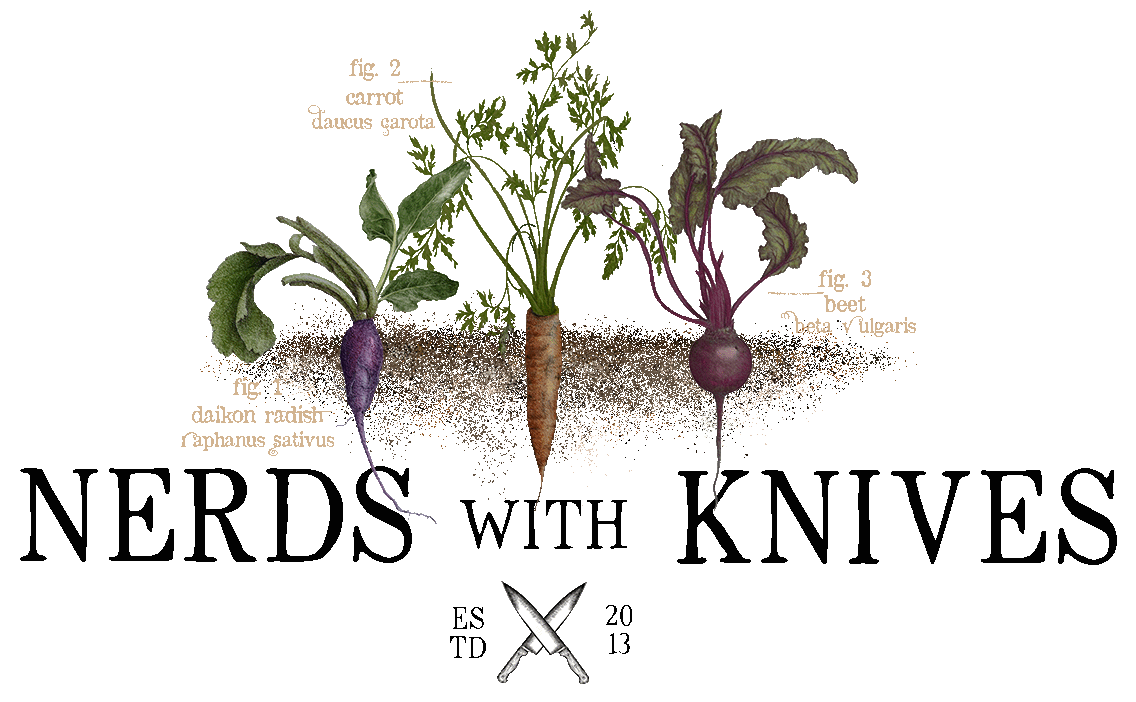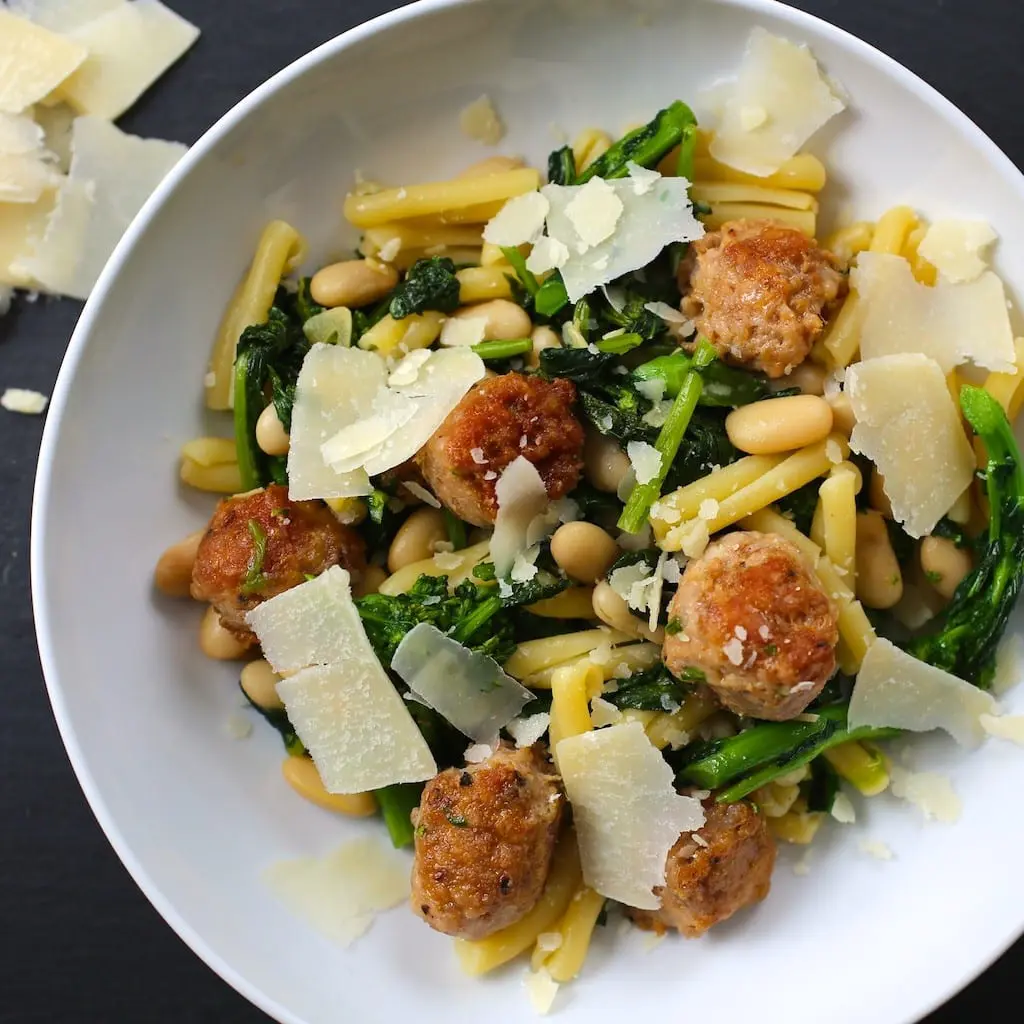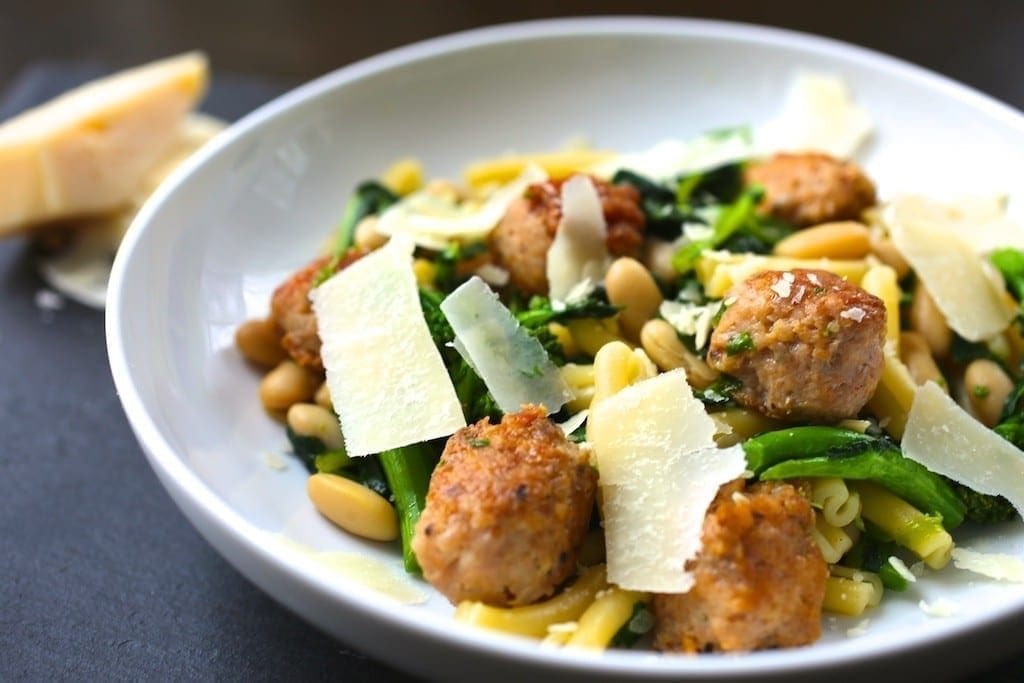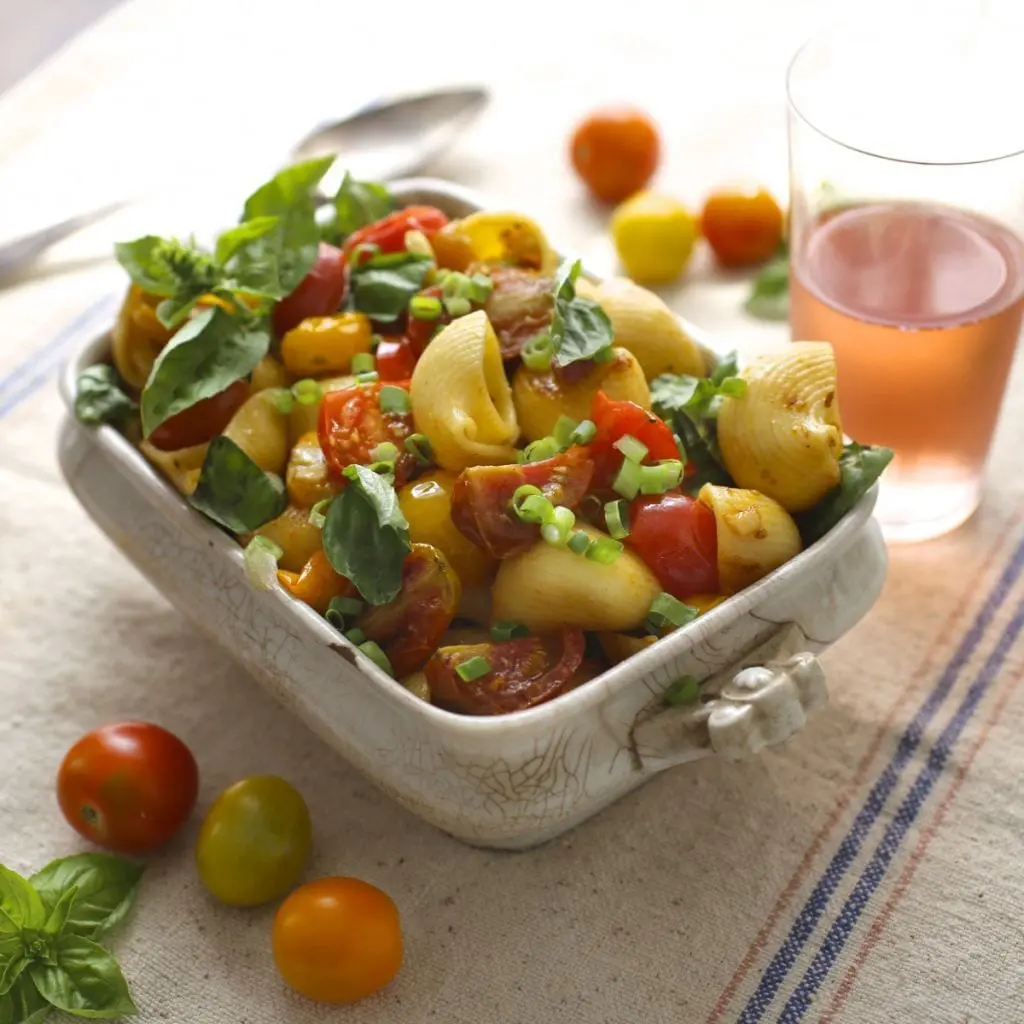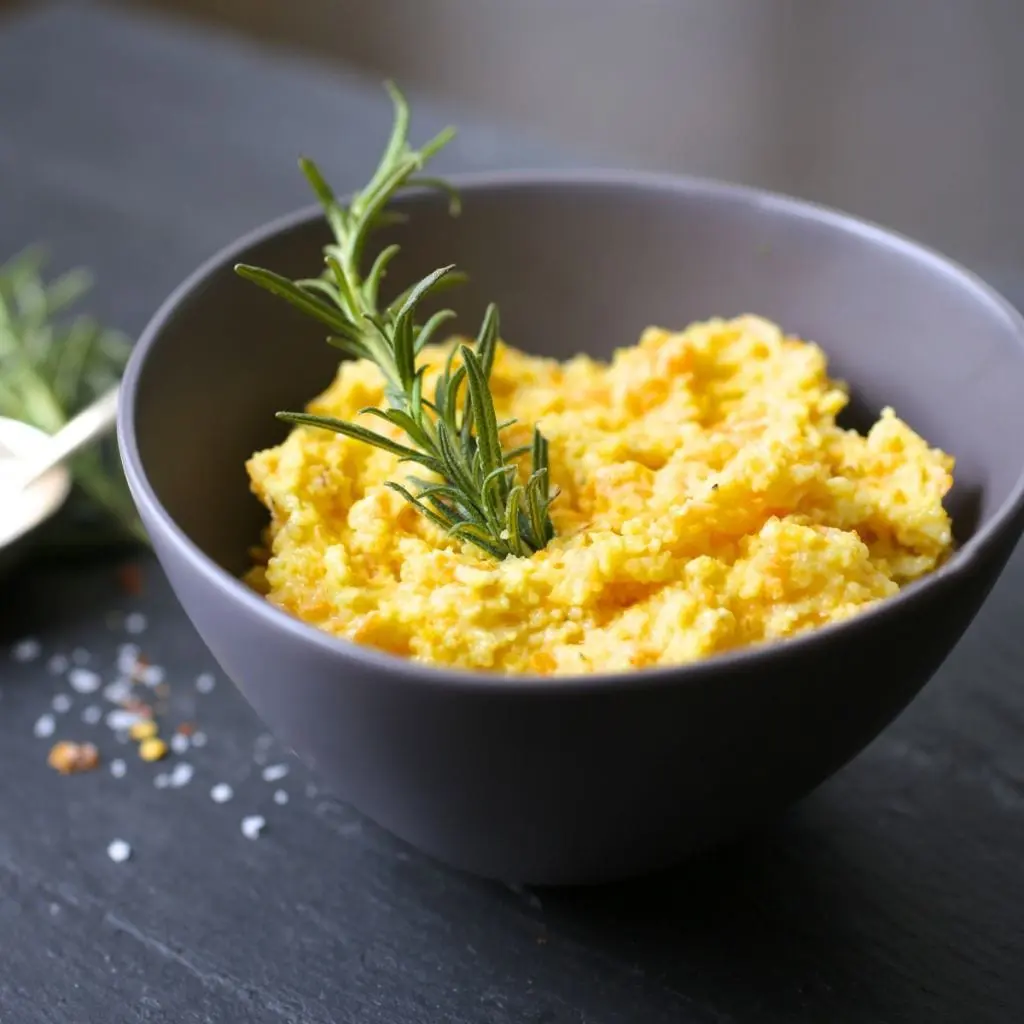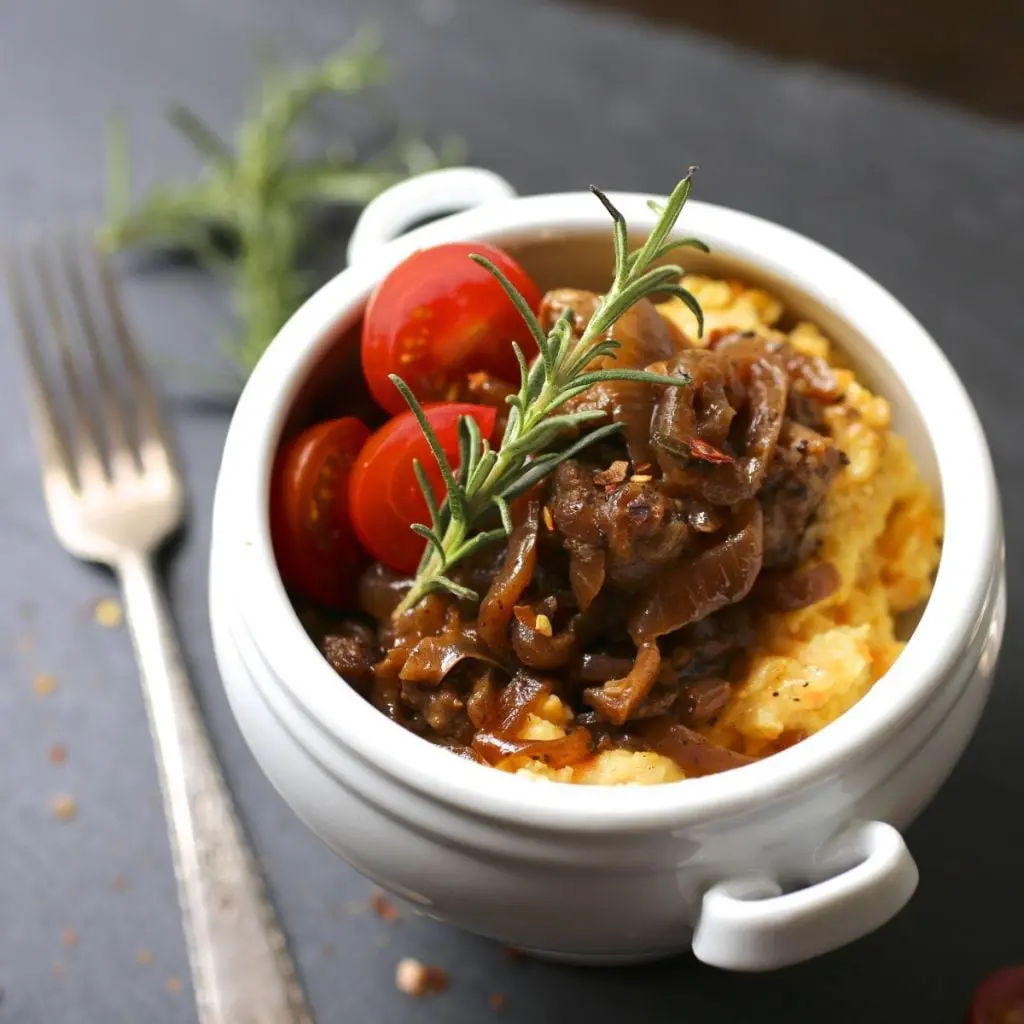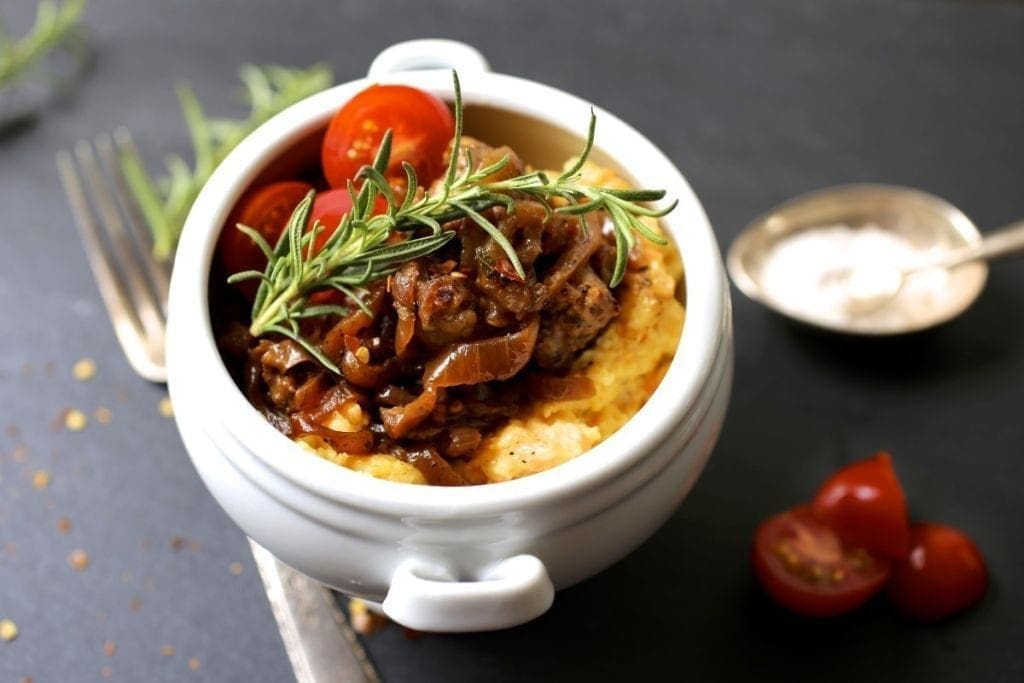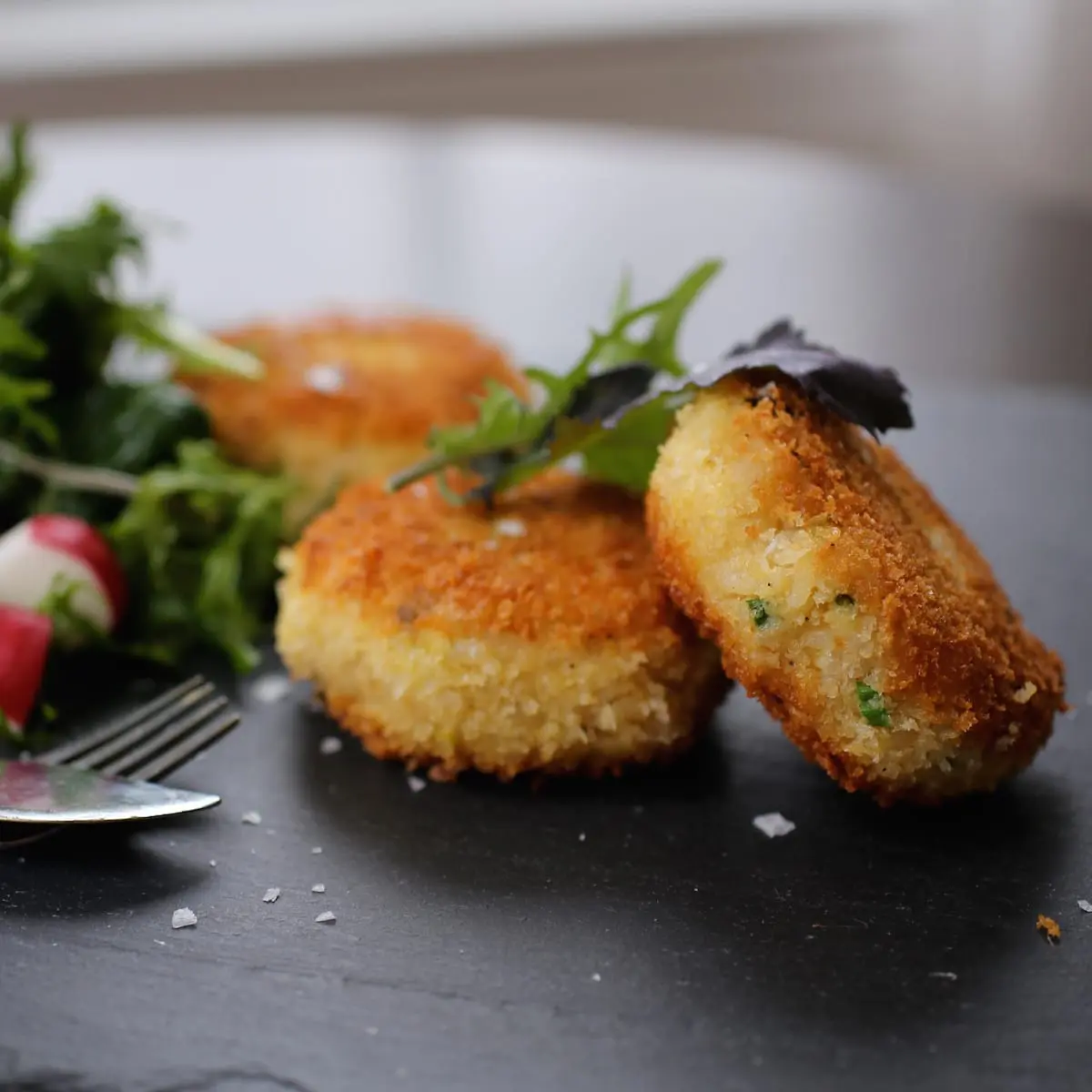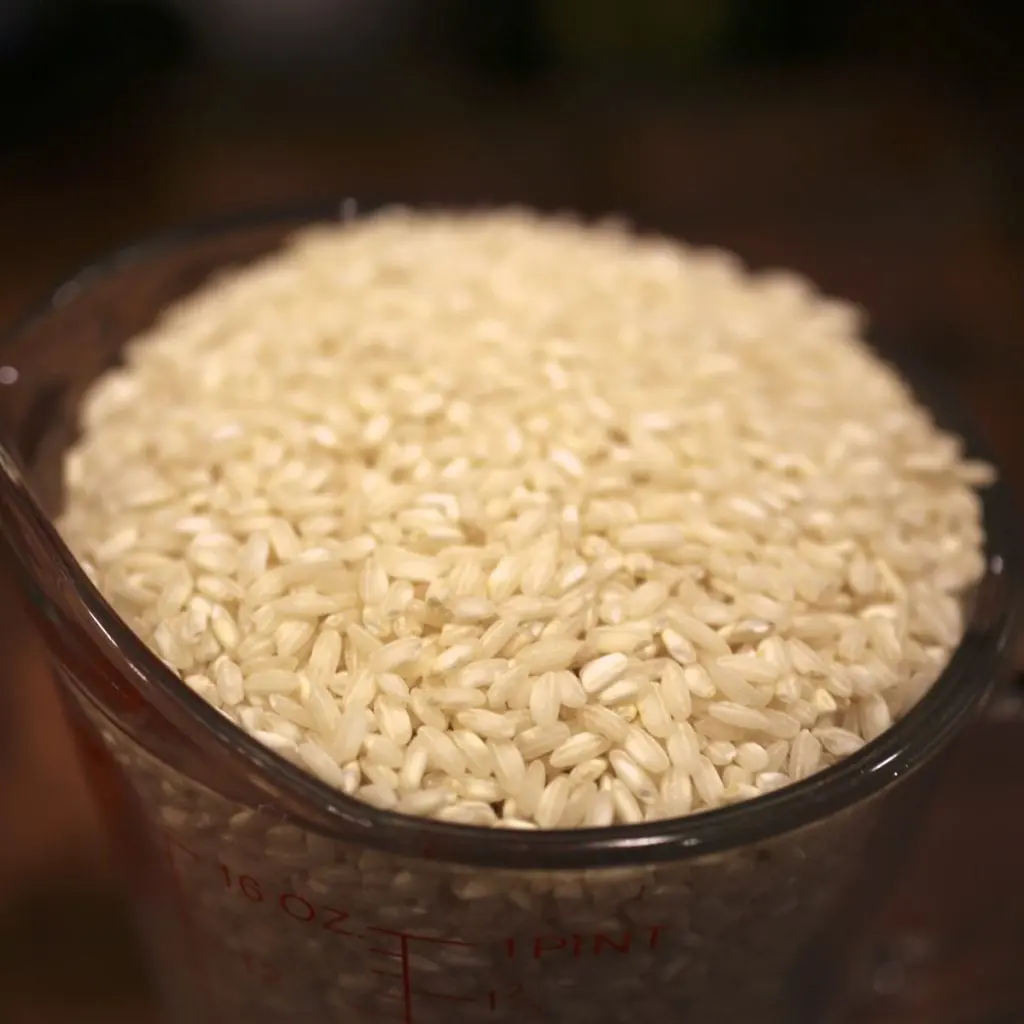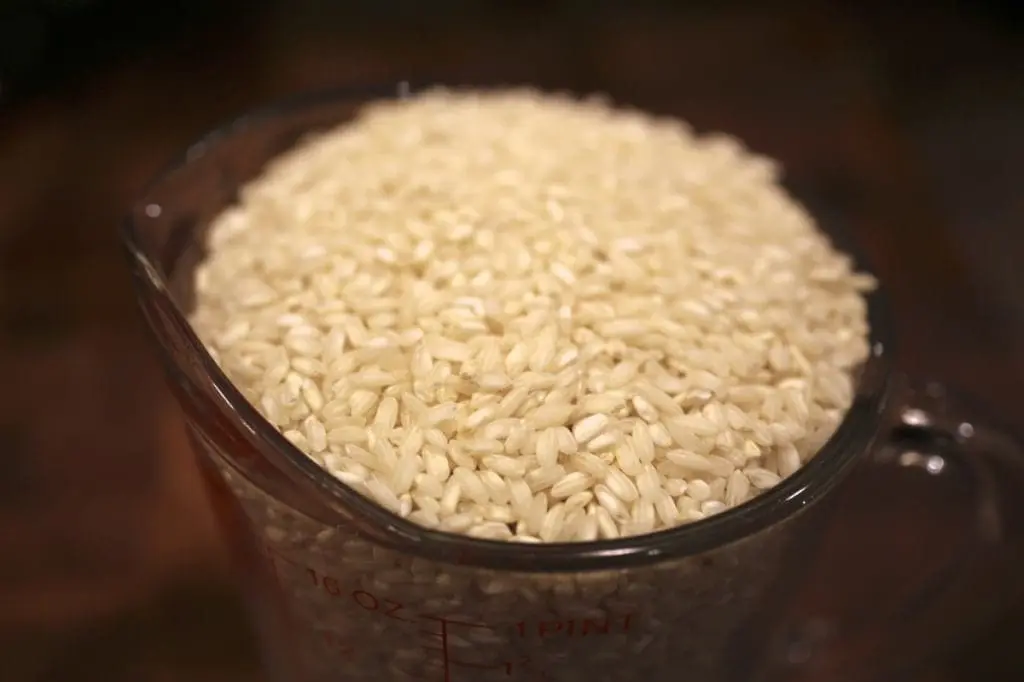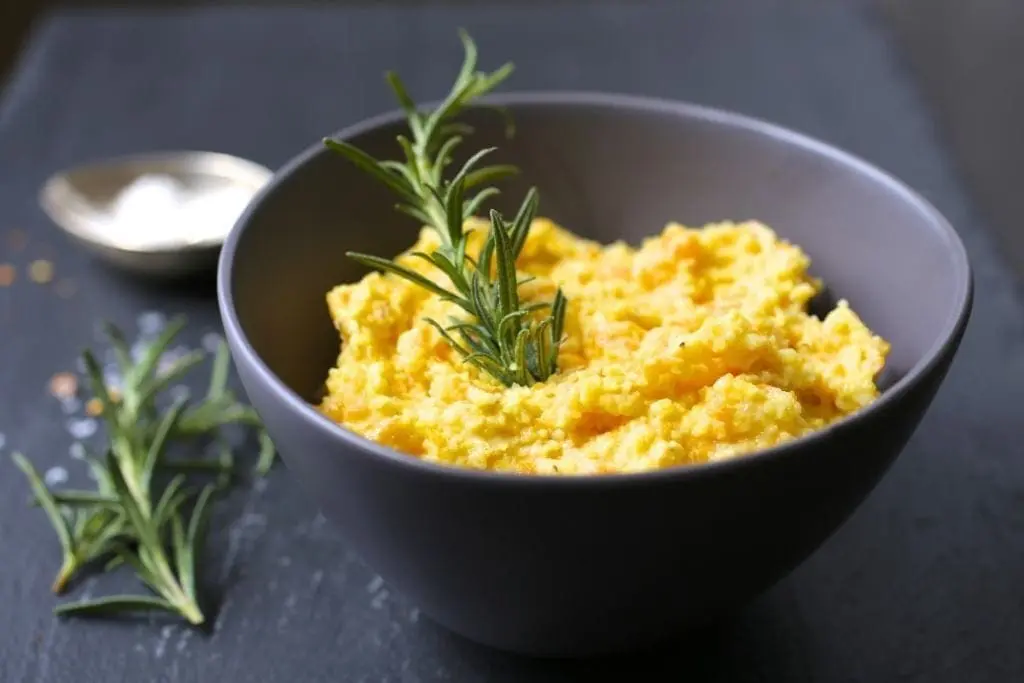
Somehow polenta has gotten the reputation of being difficult to cook. That you have to stand over it and stir and stir, and if you stop for even one moment, your lovely silky cornmeal will turn into a brick of yellow concrete. To that I say “pshaw!” [Matt says: I don’t know where she gets these expressions, I really don’t.]
The truth is, make sure the liquid (which could be water, milk, broth or a combination) is hot, and whisk the polenta in slowly, making sure it doesn’t clump. Once it’s all mixed in, you can cover the pot and just stir it every ten minutes or so, and it will be perfect and ready to serve in 30 to 40 minutes.
This recipe, which was inspired by Melissa Clark, has grated butternut squash in it, which gives it a lovely vegetal sweetness. We used it to make Polenta With Sausage and Onion, but it would be great for any dish that you would have polenta with. I’ve changed the recipe slightly because I like using coarse rather than finely ground polenta. I also added a little milk to the liquid, increased the amount of squash and decreased the butter.
Don’t use quick-cooking polenta for this. Not just because it doesn’t taste the same, but it also won’t give the squash the time it needs to cook.
Nerd Tips:
- Avoid de-germinated cornmeal (the germ has been removed to increase its shelf life), as it’s not a whole grain. We really love Wild Hive Farm‘s Polenta but use any long-cooking brand you like.
- Traditional polenta is made with water but you could substitute a portion with broth or milk if you want a richer flavor.
- We sometimes add mascarpone which makes it especially creamy and rich.
- Leftover Polenta will solidify into the shape of the container in which you store it. You can slice or cube it and then roast, grill, or pan-fry it. To make it creamy again, warm it slowly over low heat with a little broth, milk, or water, and stir. It won’t be quite as creamy as it was originally, but it should still be pourable.
Read more
